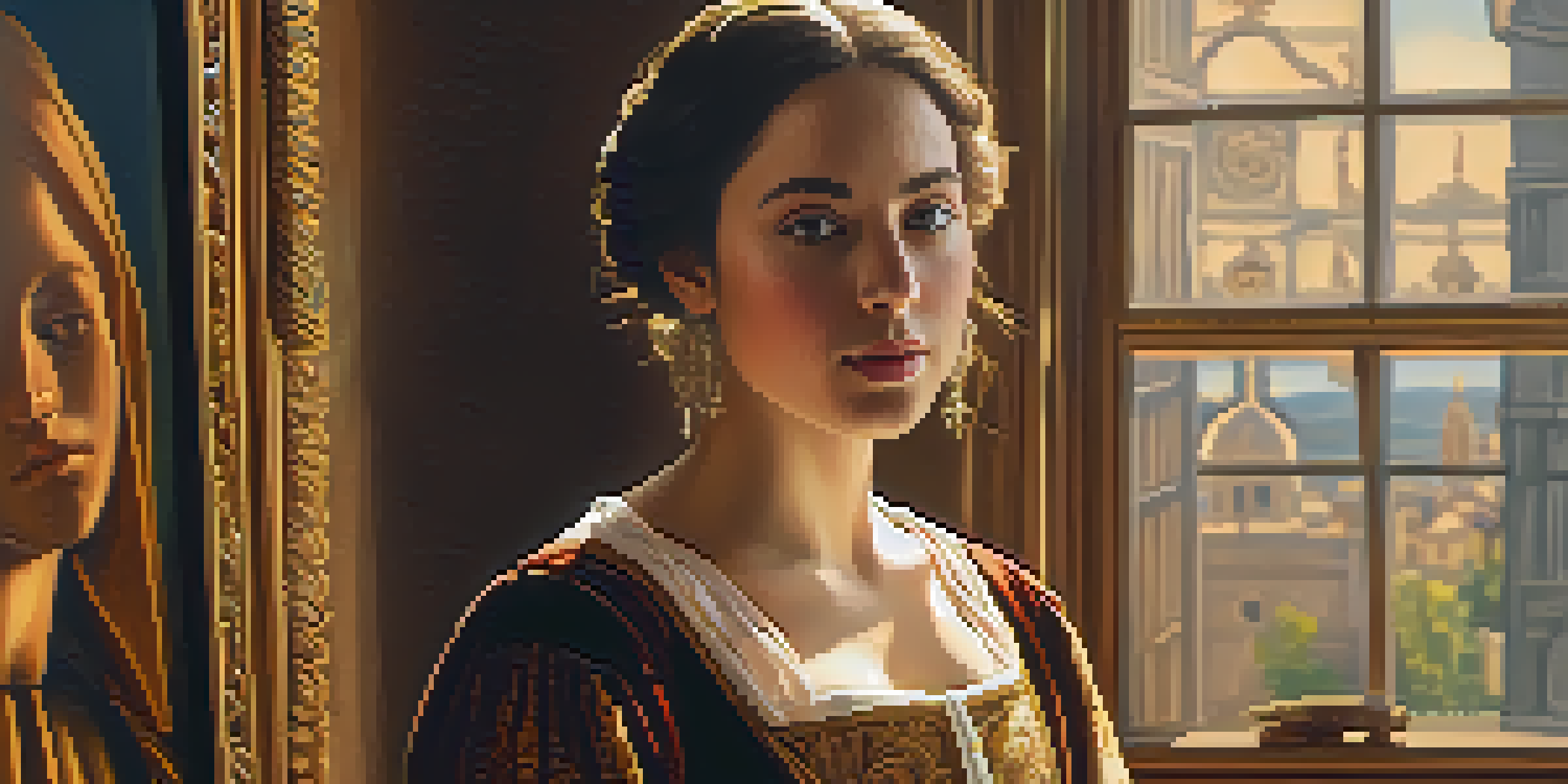The Role of Women in Portrait Painting Throughout History

Early Female Portrait Artists: Breaking Barriers
Throughout history, women have often been sidelined in the art world, especially in portrait painting. However, during the Renaissance, figures like Sofonisba Anguissola emerged, showcasing their talents and challenging societal norms. Anguissola's portraits, characterized by their emotional depth and unique perspectives, paved the way for future female artists. Her success opened doors for women to contribute to the art scene, albeit in a limited capacity.
The 18th Century: Women as Subjects and Creators
In the 18th century, women began to gain more visibility, both as subjects in portraits and as creators. Artists like Élisabeth Louise Vigée Le Brun not only painted royal figures but also established themselves in a male-dominated field. Her work often celebrated female beauty and strength, presenting women in a new light. This dual role of women as both muses and artists marked a significant shift in the art world.
Women Artists Break Historical Barriers
Female portrait artists like Sofonisba Anguissola and Élisabeth Louise Vigée Le Brun challenged societal norms and opened doors for women in art.
19th Century: The Rise of Female Portraitists
The 19th century saw an explosion of female portraitists, with women like Mary Cassatt and Berthe Morisot gaining recognition. Their works often explored intimate moments, capturing the essence of women's lives in a way that hadn't been seen before. As they challenged traditional roles, these artists brought a fresh perspective to portrait painting. This era highlighted the importance of women's experiences and emotions in art.
The Role of Women in Artistic Movements
Women played a crucial role in various artistic movements, including Impressionism and Modernism. Their contributions not only enriched these movements but also reshaped the perception of portrait painting. For instance, women artists often focused on domestic life and personal relationships, offering insights into their worlds. This shift in focus allowed for a broader understanding of what portraiture could represent.
19th Century Showcases Female Talent
The emergence of artists such as Mary Cassatt and Berthe Morisot highlighted women's unique perspectives and experiences in portrait painting.
Challenges Faced by Women Artists
Despite their contributions, women artists often faced significant challenges, including limited access to formal training and professional opportunities. Many had to navigate a landscape that favored male artists, making their achievements even more remarkable. The struggle for recognition and respect within the art community persisted, but it fueled a determination among women to succeed. This resilience is evident in the works they produced.
Contemporary Female Portrait Artists
Today, contemporary female portrait artists are making waves and redefining the genre. Artists like Kehinde Wiley and Amy Sherald create powerful portraits that challenge societal norms and celebrate diversity. Their work often reflects personal and cultural narratives, pushing the boundaries of traditional portraiture. This modern era showcases women's voices as essential to the evolving art landscape.
Contemporary Voices Redefine Portraiture
Modern artists like Kehinde Wiley and Amy Sherald are pushing the boundaries of portraiture, celebrating diversity and personal narratives.
The Legacy of Women in Portrait Painting
The legacy of women in portrait painting is rich and multifaceted, influencing generations of artists. Their contributions have not only expanded the narrative of art history but have also encouraged new dialogues about identity and representation. As more women continue to break barriers, their impact on the art world becomes increasingly evident. This ongoing legacy inspires future artists to explore their voices and experiences.
Conclusion: Celebrating Women in Portraiture
In conclusion, the role of women in portrait painting throughout history is one of resilience, creativity, and impact. From early pioneers to contemporary innovators, women have shaped the art form in profound ways. It's essential to recognize and celebrate their contributions, ensuring that their stories are told and appreciated. As we look to the future, the influence of women in art will undoubtedly continue to flourish.